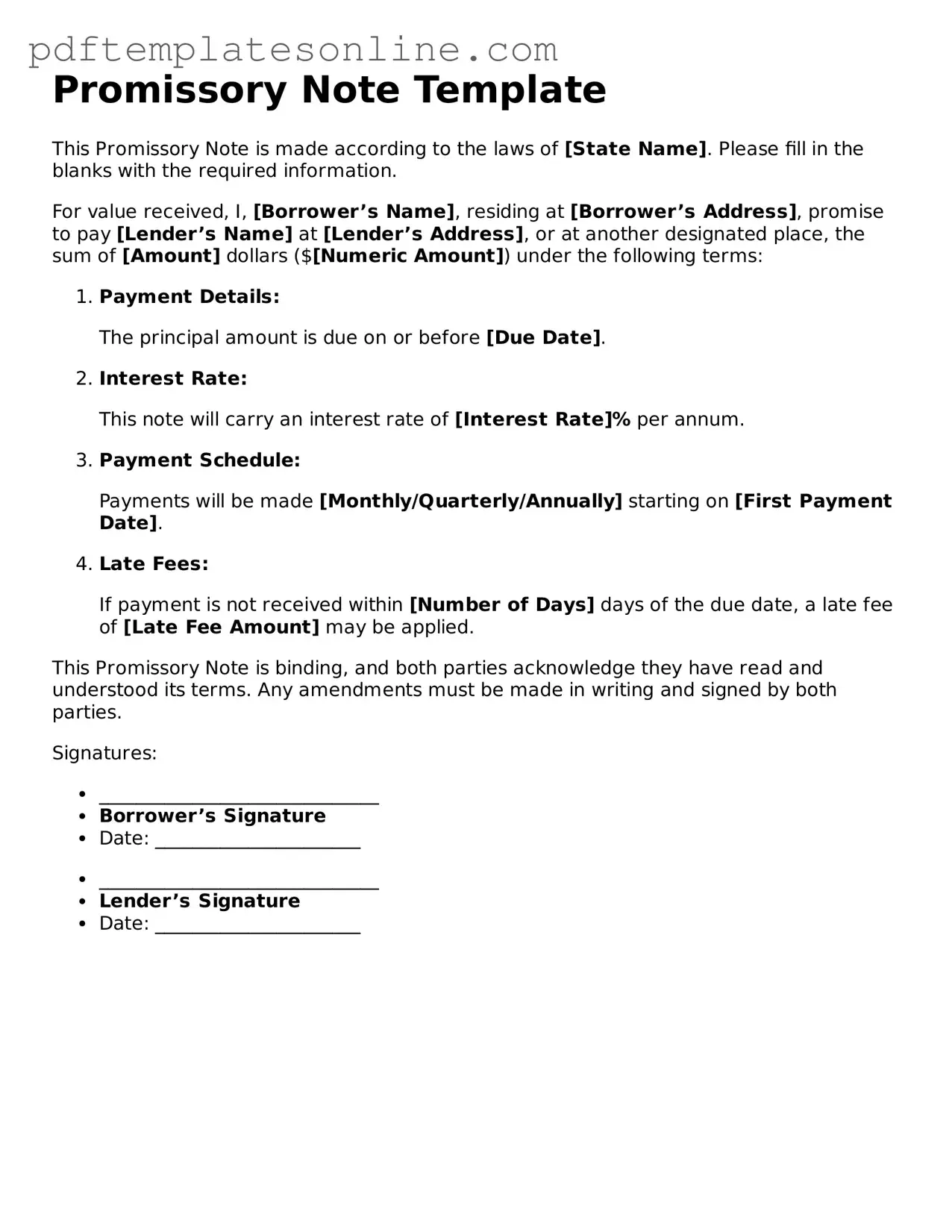Filling out a Promissory Note can seem straightforward, but many people make critical mistakes that can lead to complications down the line. One common error is failing to include all necessary details. This includes not specifying the loan amount, interest rate, or repayment schedule. Omitting these details can create confusion and disputes later.
Another frequent mistake is not clearly identifying the parties involved. The borrower and lender must be explicitly named, including their full legal names and contact information. If this information is incomplete or incorrect, it can complicate enforcement of the note.
Some individuals overlook the importance of signatures. A Promissory Note is not valid without the proper signatures from both parties. Additionally, failing to date the document can lead to issues regarding when the terms of the loan begin. A simple date can provide clarity and protect both parties.
People often neglect to include terms for default. Without clear consequences for missed payments, the lender may find it challenging to enforce the agreement. Clearly outlining what happens in the event of a default can help avoid disputes and ensure that both parties understand their obligations.
Another mistake is not considering state laws. Each state may have different requirements regarding Promissory Notes. Ignoring these regulations can render the document unenforceable. It's crucial to understand the laws that apply to your situation.
Lastly, many individuals fail to keep copies of the signed document. After the Promissory Note is executed, both parties should retain a copy for their records. This can be vital in case any disputes arise in the future. Keeping accurate records protects everyone's interests.
